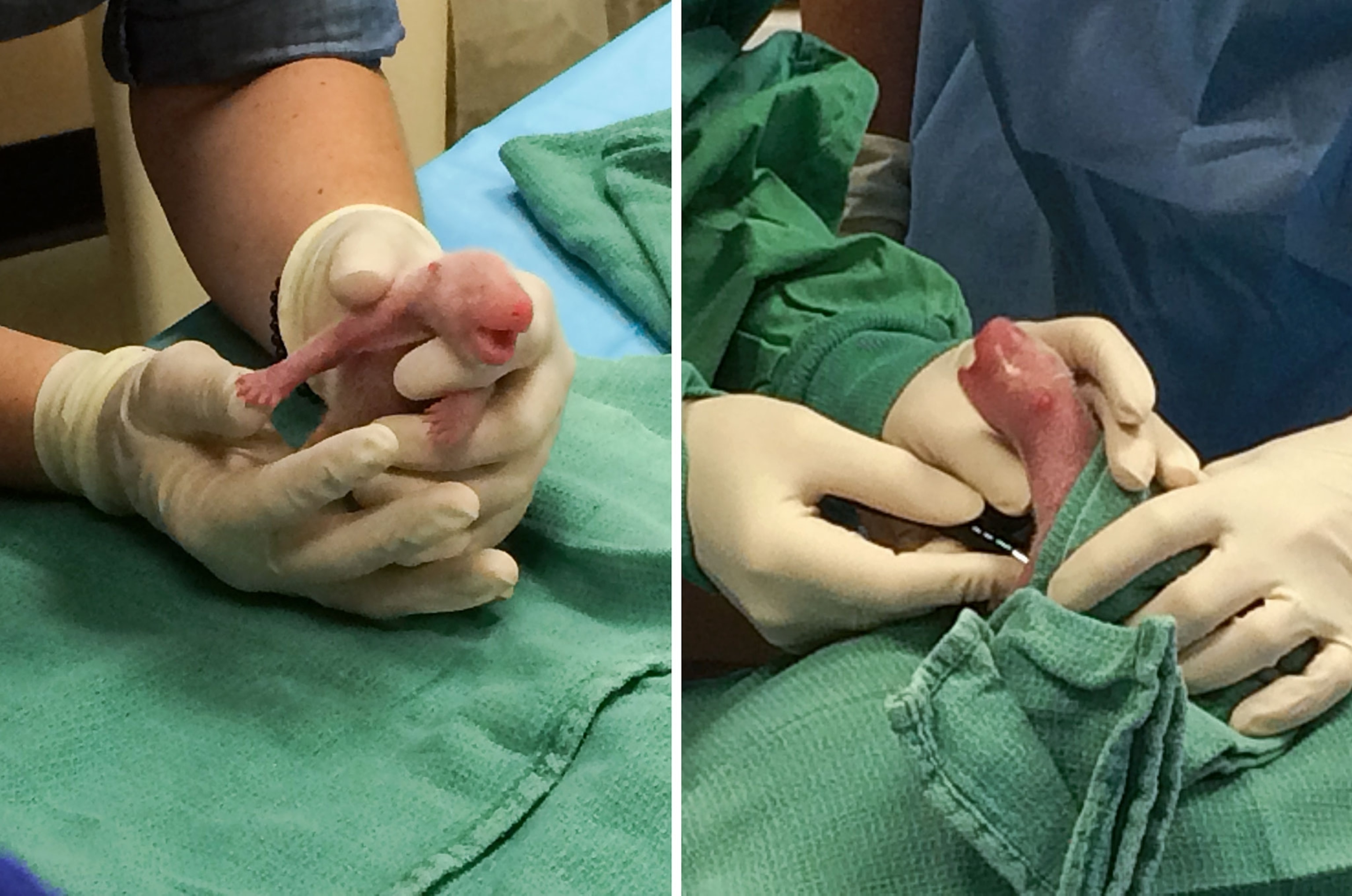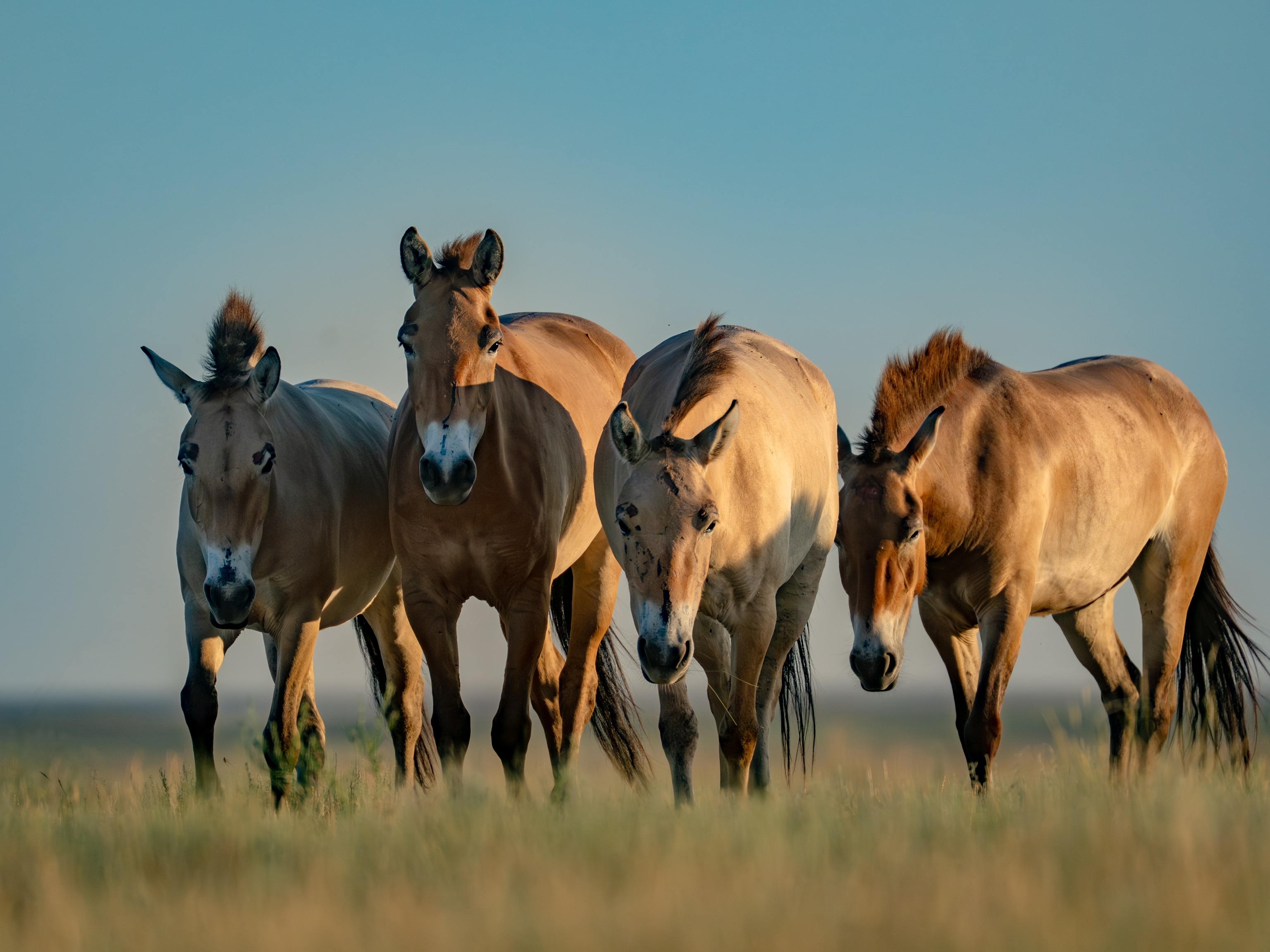
These Newborn Pandas Face 4 Big Threats to Survival
The blind, hairless babies born recently at Washington D.C.'s National Zoo are completely dependent on their mothers—who can sometimes accidentally crush them.
Now that Washignton, D.C.'s female panda has surprised the world with twin cubs, zoo staff are working 'round the clock to help the babies through the first fragile weeks of life.
But these tiny, blind newborns are notoriously challenging to keep alive, and their survival in at the National Zoo is far from assured.
Mei Xiang, the zoo’s 17-year-old female panda, gave birth to twins over the weekend—bringing a happy end to an anxious wait that had begun with artificial insemination in April. (See “Is Breeding Pandas in Captivity Worth It?”)
The National Zoo is keeping the twins under 24/7 surveillance, explaining in a statement that "the newborn cubs are vulnerable and this first week is incredibly important and the risk remains high."
Four challenges that young pandas must overcome:
Cubs are very needy and vulnerable at birth.
At three to five ounces at birth, the giant panda is 1/900th the size of its mother—one of the smallest mammal newborns relative to its mother's size, trumped only by marsupials.
Unable to crawl or see for about two months, the infant is reliant on the mother's warmth, milk, and protection.
Since captive panda breeding began in the 1980s, knowledge of panda behavior and nutrition and technology in monitoring them has increased so much that "almost all pandas born in captivity survive," says Marc Brody, founder and president of Panda Mountain, a nonprofit group that works to conserve and restore panda habitat in China's Wolong Nature Reserve.
"Pandas are so precious, they don't leave things to chance," adds Brody, also a National Geographic grantee.
Even so, tragedies can happen. Mei's second cub, a female, was born in September 2012, but died a week later due to lung and liver damage, according to the zoo. Poorly developed lungs likely prevented the cub from getting enough oxygen.
And in 2013, Mei delivered a stillborn twin—a very rare event.

Twins require special care.
In the wild, if a panda has twins, "the natural instinct of the mother is to choose the stronger of the two pandas and abandon one," Brody said.
But zoos have developed a way to get around that: They will rotate the twins between mom and the incubator every few hours.
Easier said than done, though: On Monday morning, the National Zoo's panda team reported having "a challenging night."
When the team "tried to swap the cubs at 11 p.m., Mei Xiang would not set down the cub she had in her possession. Consequently, the team cared for the smaller cub until 7:05 a.m., when they successfully swapped the cubs," according to a zoo statement.
When it works, this strategy means that each baby will get enough time with its mother to be fed by her. If necessary, her milk will be supplemented with a mixture of infant formula, puppy food, and water. The procedure has worked many times in China, zoo officials said. And a pair of panda twins born at the Atlanta zoo in 2013 is thriving, too. (See “Is Breeding Pandas in Captivity Worth It?”)
Will Mei's natural instinct to abandon one baby kick in? Brody says it's possible, but more than likely she will treat each cub equally—what he calls a "love the one you're with" approach.

Panda mothers can accidentally crush their babies.
The tiny pandas are especially vulnerable in the face of the mother's 200-pound (90-kilogram) frame. In 2006, a giant panda in China accidentally killed her newborn as it nursed.
Considering the size difference, "it's surprising they're not crushed more often," says Brody.
By watching the zoo's panda cams 24/7, zoo staff will keep a careful eye on the twins to make sure mom doesn't accidentally harm them.
Captive-breeding facilities have highly sensitive recording microphones, so if they hear anything awry, they will intervene, Brody says. (Read about the costs of breeding pandas in National Geographic magazine.)
Zoo vets also make sure the baby's eating well and getting enough milk: Panda cubs may nurse for eight to nine months. As the infant gets older, the vets may give it supplemental food if it's growing too slowly.
"A big part of science is observation," he adds, and zoo staff has learned a tremendous amount by watching how panda mothers care for their babies, he says.
For instance, scientists have learned that mother pandas lick their babies' bellies to help them excrete waste, since the young pandas' muscles are too weak to do it themselves.
"They discovered it was really important to help the pandas excrete waste, and there's now a technique where they've learned how to assist a baby excrete waste," he says.
They don't have enough habitat.
Though giant pandas may be thriving in captivity, it's a bleaker picture in the wild. Possibly as few as 1,600 giant pandas still roam the mountainous forests of central China, largely due to the fragmentation of their habitat by human development. (See more panda pictures.)
"It is my hope that our concern about the vulnerability of a tiny and adorable twin panda cubs and will lead us to address the vulnerability of pandas in the wild," Brody says.
"Just as good science has led to breakthroughs in the breeding and care of captive pandas, we now have sound scientific research that shows the restoration of forest habitat is achievable," he says. (Watch a trailer for the National Geographic movie "Pandas: The Journey Home.")
To that end, there are efforts underway to grow native plants and trees in the Wolong Nature Reserve to restore forests and panda habitat for the future, he says.
Meanwhile, Brody's looking forward to watching the National Zoo newborns grow up.
"In 4 to 12 months when they're toddlers, to watch these two roly poly guys play will be just super," he says. "The panda cams are going to go crazy."








